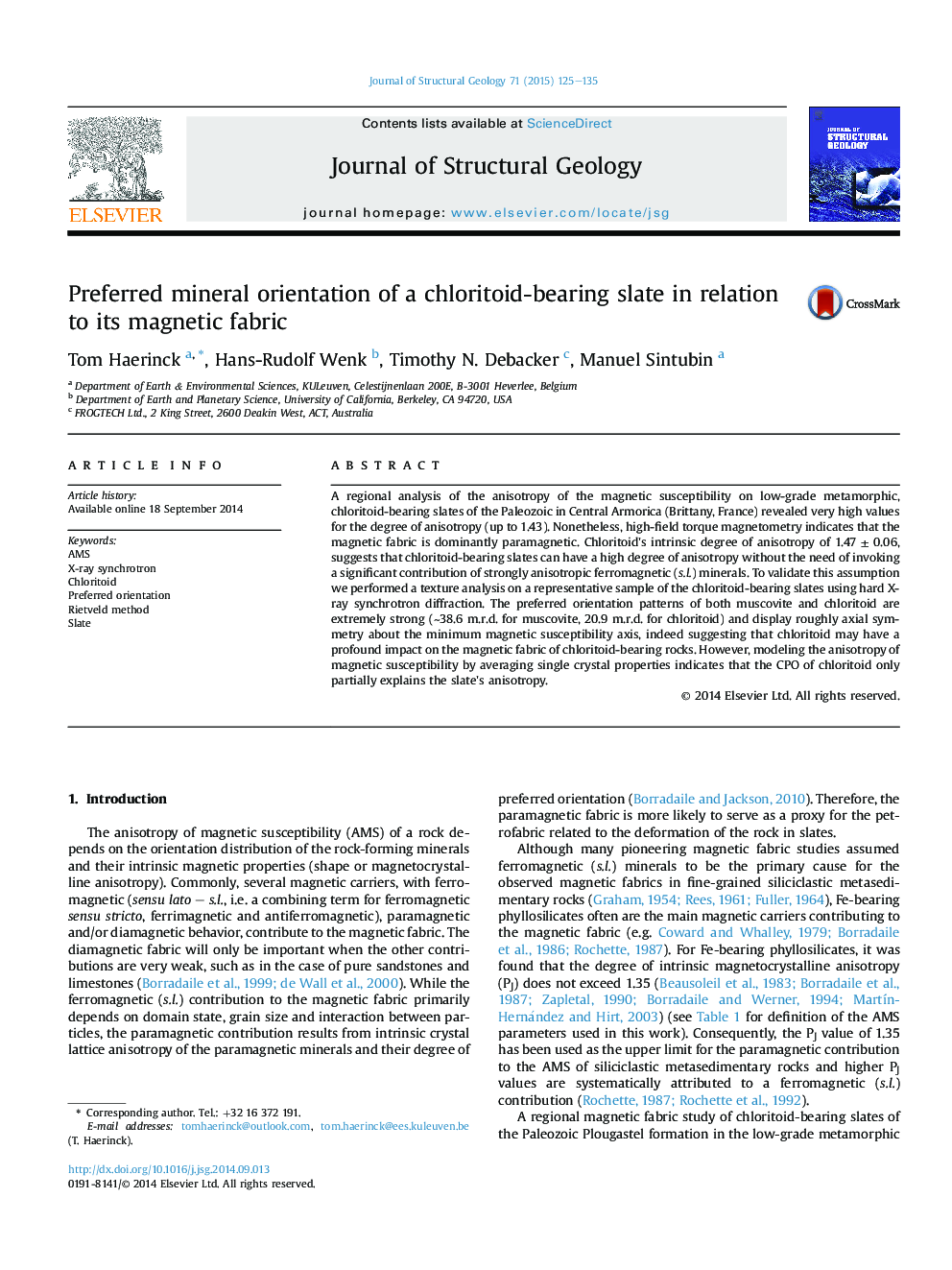| Article ID | Journal | Published Year | Pages | File Type |
|---|---|---|---|---|
| 4733064 | Journal of Structural Geology | 2015 | 11 Pages |
•The muscovite/chloritoid axial symmetric pole figure patterns reflect pure flattening.•The muscovite and chloritoid textures show an extremely strong preferred orientation.•Chloritoid has a profound impact on the magnetic fabric of the investigated slate.•The calculated (from mineral textures) and measured degree of anisotropy do not match.
A regional analysis of the anisotropy of the magnetic susceptibility on low-grade metamorphic, chloritoid-bearing slates of the Paleozoic in Central Armorica (Brittany, France) revealed very high values for the degree of anisotropy (up to 1.43). Nonetheless, high-field torque magnetometry indicates that the magnetic fabric is dominantly paramagnetic. Chloritoid's intrinsic degree of anisotropy of 1.47 ± 0.06, suggests that chloritoid-bearing slates can have a high degree of anisotropy without the need of invoking a significant contribution of strongly anisotropic ferromagnetic (s.l.) minerals. To validate this assumption we performed a texture analysis on a representative sample of the chloritoid-bearing slates using hard X-ray synchrotron diffraction. The preferred orientation patterns of both muscovite and chloritoid are extremely strong (∼38.6 m.r.d. for muscovite, 20.9 m.r.d. for chloritoid) and display roughly axial symmetry about the minimum magnetic susceptibility axis, indeed suggesting that chloritoid may have a profound impact on the magnetic fabric of chloritoid-bearing rocks. However, modeling the anisotropy of magnetic susceptibility by averaging single crystal properties indicates that the CPO of chloritoid only partially explains the slate's anisotropy.
